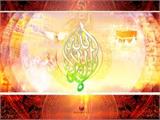Gastrointestinal Bleeding Treatment Guide on www.mingyihui.net (Introduction)
Patient's Guide to Upper Gastrointestinal (GI) Bleeding (Introduction) http://www.mingyihui.net/article_484.html What is upper GI bleeding? Upper gastrointestinal bleeding refers to bleeding caused by lesions in the esophagus, stomach, duodenum, the upper segment of the jejunum (about 50cm below the suspensory ligament of the duodenum), as well as pancreatic ducts and biliary tract. Its clinical manifestations are mainly hematemesis and melena, making it a common surgical emergency. How does upper GI bleeding manifest? Are there any special symptoms? What are the early symptoms of upper GI bleeding? There are numerous causes of upper GI bleeding, so its clinical manifestations vary. (1) History and Signs: Medical history inquiry and physical examination remain the main diagnostic steps. Small amounts of slow bleeding generally have no obvious symptoms or only mild weakness or dizziness. Some cases are only discovered through occult blood tests in vomitus or feces. Generally speaking, upper GI bleeding manifests mainly as hematemesis or black stool, which also depends on the amount and speed of bleeding. If the bleeding volume is large and fast, the vomited blood appears dark red or bright red, often accompanied by signs of hemorrhagic shock. Rapid intestinal peristalsis can cause the appearance of dark red or even bright red bloody stools, easily confused with lower GI bleeding. If the blood remains in the stomach, it turns into acidic hemoglobin when in contact with gastric acid, making the vomited blood appear brown or coffee-ground-like; if the blood stays in the intestines for a longer time, the iron in hemoglobin combines with sulfur in the intestines through bacterial action to form ferrous sulfide, causing the stool to turn black like asphalt, also known as tarry stool. A bleeding volume exceeding 60ml can cause black stool. Acute massive bleeding or continuous bleeding leads to palpitations, cold sweats, restlessness, pallor, clammy skin, increased heart rate, decreased blood pressure, and even fainting due to circulatory failure. If the short-term blood loss exceeds one-third of the total circulating blood volume, it can be life-threatening. Within a few hours after bleeding, hemoglobin, red blood cell count, and hematocrit may not change significantly and cannot be used to assess the severity of the bleeding. Three to four hours after bleeding up to several days, tissue fluid enters the circulation to compensate for blood volume. Even if the bleeding has stopped, hemoglobin, red blood cell count, and hematocrit continue to decrease, and bone marrow stimulation signs appear, characterized by an increase in late normoblasts, polychromatophilic erythrocytes, and reticulocytes. The latter can reach 5-15% four to five days after bleeding. If reticulocyte counts persistently increase two weeks after bleeding, it suggests ongoing bleeding. White blood cell counts increase a few hours after massive bleeding and return to normal about three to four days later. Blood urea nitrogen increases, reaching up to 40mg/dl, due to the absorption of digestion products of intraintestinal blood protein and reduced renal blood flow and glomerular filtration rate after shock. When bleeding stops, blood urea nitrogen returns to normal within two to three days. If the patient has no vomiting or dehydration and good renal function but continuously increasing blood urea nitrogen, it often indicates ongoing bleeding. 1. Upon discovering upper GI bleeding, estimate the degree of bleeding (see Table 36-2) to facilitate treatment planning. Table 36-2 Grading of GI Bleeding Severity Blood Loss Blood Pressure Pulse Hemoglobin Symptoms Mild 1500ml in adults, more than 30% of total circulating blood volume Systolic pressure below 10.7kPa >120 beats/min <7.9g/dL Palpitations, cold extremities, cold sweats, oliguria or anuria, confusion 2. Next, determine the cause of bleeding. Chronic upper abdominal pain or ulcer history over many years suggests that the bleeding most likely comes from gastric or duodenal ulcers. Hepatitis, jaundice, schistosomiasis, or chronic alcohol poisoning history helps diagnose ruptured esophageal and gastric varices bleeding. If physical examination reveals spider nevi, liver palms, splenomegaly, abdominal wall varices, ascites, etc., the possibility is greater; sometimes it is difficult to differentiate from ulcer bleeding. A double-balloon triple-lumen tube can be tried for tamponade hemostasis, and if the bleeding stops, the diagnosis of ruptured esophageal and gastric varices bleeding can be established. Stress-induced ulcers occur in acute erosions and superficial ulcers in the stomach under stress conditions and are one of the common causes of upper GI bleeding. They often have external or internal pathogenic factors. The former often occurs after taking salicylic acid preparations, Butazolidin, Indocin, adrenal corticosteroids, Reserpine, or alcohol, due to lipoprotein damage in the gastric mucosal epithelium; the latter often occurs after sepsis, intracranial disease, extensive burns, severe trauma, shock, or major surgery, due to sympathetic nerve excitation causing gastric mucosal vasoconstriction and vagus nerve excitation opening submucosal arteriovenous shunts, aggravating gastric mucosal ischemia and hypoxia leading to erosion and bleeding. According to the above medical history, diagnosis is not difficult. In recent years, due to the widespread application of fiberoptic endoscopy, the detection of acute erosive gastritis mainly manifested by acute gastric mucosal erosion and bleeding has increased, and patients often have accompanying abdominal pain, nausea, vomiting, and dyspepsia. The above medical history and clinical manifestations help in diagnosis. Hematemesis accompanied by difficulty swallowing mostly originates from esophageal cancer or esophageal ulcers. Mallory-Weiss syndrome involves sudden increases in esophageal pressure leading to longitudinal tears at the esophagogastric junction causing upper GI bleeding, often occurring after severe vomiting, coughing, or heavy lifting. Upper GI bleeding caused by biliary bleeding is mostly due to Ascaris lumbricoides in the bile ducts, biliary inflammation, or gallstones. Its characteristic is cyclical hematemesis or bloody stools following repeated episodes of right upper quadrant colic, fever, jaundice, and other biliary infection symptoms. (2) Fiberoptic Gastroscope Examination: This can examine the mucosal lesions of the esophagus, stomach, and duodenal bulb. Units with the necessary facilities can perform examinations during acute bleeding and directly observe the status and location of active bleeding lesions. Most diagnoses can be confirmed through biopsy. Extensive practice has proven that performing endoscopic examinations during acute bleeding periods is safe. The closer the examination is to the bleeding time, the higher the positive diagnostic rate. As long as the operator is skilled and the application is appropriate, it will not exacerbate the bleeding. Washing the stomach with cold water before the examination can make the field of vision clearer. The hemoglobin level of the examinee should not be less than 5g/dL, and oxygen should be given during the examination to prevent serious complications caused by myocardial hypoxia. (3) X-ray Barium Meal Examination: This is still the most commonly used examination method, helping to determine the cause and location of bleeding. Using barium and air double-contrast imaging can detect superficial gastric mucosal lesions or ulcers, with a diagnostic accuracy similar to endoscopic examination and can serve as a complementary role. However, barium meal examination is not suitable during acute active bleeding and is only applicable for examining chronic bleeding or cases where bleeding has stopped. (4) Selective Angiography: If endoscopic examination and barium meal examination still cannot determine the cause of bleeding, selective angiography can be performed. Through femoral artery catheterization to the branches of the celiac artery or superior mesenteric artery, contrast agent injection can discover extravasation of contrast agent, varicose veins, vascular tumors, vascular malformations, and arteriovenous malformations, which can be applied during acute bleeding periods. (5) Radionuclide Imaging: This is a non-invasive examination method developed in recent years. Currently, 99mTc-labeled red cell abdominal scintigraphy is used, with the advantage of continuous dynamic observation and high sensitivity. When the digestive tract bleeding accounts for only 1% of the total body blood volume, it can be detected. Since the labeled red cells can still image 24 hours later, it has unique value in diagnosing intermittent bleeding. The disadvantage is that its role in diagnosing the cause and location of bleeding is limited, with poor specificity, and its clinical application is somewhat restricted. After knowing the manifestations of upper GI bleeding, how should we proceed, and what checks should we do? http://www.mingyihui.net/article_484.html



